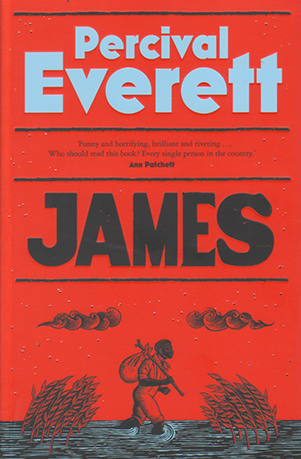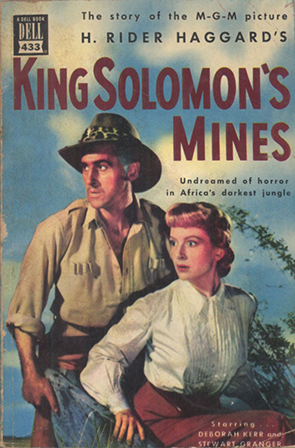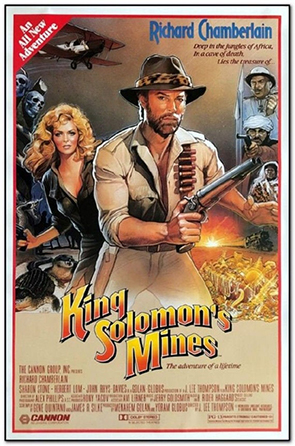Blog Archive
August 2024

1 August 2024
The Booker Longlist 2024
It’s that time of year again. When I woke up yesterday morning the book fairies had left me news that the Booker Committee had decided its roll call for the Longlist this year. We have an ongoing mission to read and review all the Booker winners eventually, so the list is of interest. I noted that there is one Australian in the list this year whom I haven’t heard of before, Charlotte Wood, who is the first Australian to be nominated for the Longlist since Richard Flanagan won the Booker 10 years ago with The Long Road to the Deep North.
In the past few years I’ve tried to get a couple of books on the shortlist read, although this year I will be pressed for time and it may be that I only read the winner, depending on who wins. That’s because I have sitting on my bookshelf one of the nominees for this year, Percival Everett’s James, which I bought when it came out. I had been impressed by Everett’s Booker shortlisted book The Trees in 2022, and had found the premise of Dr No too quirky to resist. James is a kind of spin-off from Huckleberry Finn, told from the perspective of Jim, a slave who is a character in Mark Twain’s novel.
Of the other authors in the list, I’ve only read Richard Powers before. He was shortlisted for the Booker Prize in 2018 for The Overstory and again in 2021 for Bewilderment. Both books are reviewed on this website. He also won the Pulitzer Prize in 2019 for The Overstory.
Here is this year’s Longlist:
- Colin Barrett, Wild Houses
- Rita Bullwinkel, Headshot
- Percival Everett, James
- Samantha Harvey, Orbital
- Rachel Kushner, Creation Lake
- Hisham Matar, My Friends
- Claire Messud, This Strange Eventful History
- Anne Michaels, Held
- Tommy Orange, Wandering Stars
- Sarah Perry, Enlightenment
- Richard Powers, Playground
- Yael van der Wouden, The Safekeep
- Charlotte Wood, Stone Yard Devotional

For more information about this year’s Longlist and the Booker prize visit The Booker Prize Website.
In other news, I was pleased to be able to read and review two George Eliot novels within the duration of just over a month, recently: The Mill on the Floss and Silas Marner. My intention to read all her novels had met headwinds since my last review. My review for Adam Bede was in February last year! While I was reading The Mill on the Floss I discovered that Eliot had written her novella, The Lifted Veil while she was writing the novel. I had a copy of the story in a Folio edition of 19th century women’s writing, but I like to make notes as I read and I didn’t want to mark that book. So I ordered a paperback edition which is accompanied by another short story of Eliot’s, Brother Jacob. I received it yesterday and I’ve put a copy of the cover here, which I quite like. I’ve decided to make both stories a part of my Eliot Project, even though I originally only intended to read her novels.
- bikerbuddy
5 August 2024
Old Movies


It is often stated as a truism that old classic films are better than their modern remakes. I’m not a supporter of this belief. Putting aside the production values of modern films – CGI, lighting, sets etc – modern films are often better written, better acted and directed, with better developed stories. It’s a generalisation that will falter at the first well-picked film chosen to refute it, but it is the case often enough that the first argument cannot stand unchallenged, either.
I even believe this about old movies I adore. The original 1933 King Kong, for instance. I believe this movie is one of the greatest achievements of film. In comparison, Peter Jackson’s 2005 remake has better special effects, but Jackson’s technical achievement is not as great, since the use of stop-motion animation, rear projection, dioramas and miniatures used in the 1933 production not only pushed the boundaries of technical achievement far more than Jackson needed to, but the aesthetic result is truly astounding and other-worldly. Yet the acting is poorer, the characters less developed, and the relationship between Ann Darrow and Kong doesn’t exist. Ann Darrow should be the audience’s gateway for caring about Kong, as Jackson understood, but in the 1933 original she mostly reacts to Kong as a monster. Kong’s rampage through New York at the end of the film may evoke sympathy, but we haven’t truly connected with the beast.
I was thinking about this as I was writing my last review about H. Rider Haggard’s King Solomon’s Mines. There have been a number of movies and television series made from this 1885 novel. However, I only had time to watch two for the review: the first, the 1950 version by Compton Bennett and Andrew Marton, starring Stewart Granger and Deborah Kerr; the second, made in 1985 by John Lee Thompson, starring Richard Chamberlain and Sharon Stone.
The 1950 version was, itself, a remake. The first film version of the novel appeared in 1936. But this 1950 version was in colour, and it adopted what have become standard Hollywood practices. First, it introduced a female character (there are no female members of the expedition in the novel) who becomes Quatermain’s love interest. Aspects of the plot were changed to steer things towards the love story (the novel was even re-written as a tie-in to accommodate these changes). Steward Granger aka Quatermain has to leap out of his tent a lot with a bare chest to attend to the screams of Deborah Kerr aka Elizabeth Curtis. She has to fall into his arms in relief. You get it. To help develop this little love affair (shocking news – the expedition is to look for Elizabeth Curtis’ missing husband!) the film becomes a tedious trek through the wilds of Africa with lots of stock footage of animals and Quatermain looking white, authoritative, knowledgeable and in control at every moment. There’s a bit of running away from things and hiding to enliven the dullness, but most of what the film is about falls out of the draw in the last fifteen minutes. There’s a civil war brewing, apparently (a fully-fledged civil war occurs in the novel), but the climactic moment of the film devolves into a dismal two-person fight between two African leaders whom we know virtually nothing about, nor their cause or their village. As for the mines, it’s as though the directors realised that they were never going to be that interesting, anyway, so they virtually have their characters enter the mine from the left of screen and exit straight back out, screen right, with a brief handwringing about maybe they’re trapped (but they’re not). And no one even takes a diamond, even though a whole chest full are conveniently displayed like Christmas candy. Oh, and husband Curtis is found dead, so the romance is now legit, but that has been kind of forgotten because – remember – this is just before the big fight between two guys we know nothing about for stakes we know nothing about. End film.
In comparison, I have read several times, that the 1985 film is not as good as the 1950 version. How is this true? If anyone rubbishes the 1985 film starring Chamberlain and Stone, it should be on the basis that it is a stupid movie. It is certainly not as good as Raiders of the Lost Ark from which it heavily borrows. It was made after the success of the first two Indiana Jones films, and it parodies them heavily. But this is not a film taking itself seriously. If it did, it would be rubbish. But it doesn’t, so it is merely ridiculous, and the ridiculous in life is to be treasured. In my review of the novel I compared one moment of the film to Blazing Saddles. This is what I said:
… when Quatermain bursts into a train carriage occupied by German soldiers (Quatermain’s bad guys in this film are Germans from the First World War era) he wins them over with disarming jocularity and leads them in a rendition of Campdown Races while piping on a trumpet as he makes his way to the other end of the carriage.
There is other stuff just as ridiculous in the film. In another scene, romance flowers inside a giant cooking pot while a lion watches. And the acting is also bad, but it is never wooden. You get the sense that the cast are just having fun and the director and script writer are merely playing with the tropes of what is, after all, a potentially very silly genre. I loved this! At least the makers of this film knew why they wanted to make it.
So, yeah, 1950 King Solomon’s Mines is closer to the original story, but it doesn’t do anything interesting with that, and it is far too earnest. By 1985, stupid films still get made, but at least Hollywood knows by this stage that audiences just want to be entertained!
- bikerbuddy

